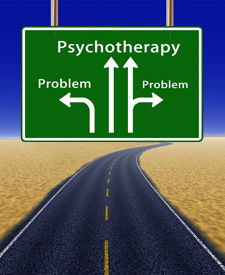Psychoanalysis
"Evidence-Based" Psychotherapy
The evidence for "evidence-based therapy" is real; its relevance often is not.
Posted June 22, 2019

When a mental health clinic, online referral service, or private practice offers “evidence-based” psychotherapy, that certainly sounds like a selling point. It suggests that solid science supports the therapy being offered—and that competing services lack this support. But what does this phrase really mean?
“Evidence-based medicine” first appeared in the medical literature in 1991. It cast doubt on physicians’ clinical intuition and anecdotal experience, reminding them that science should guide medical practice. (The term was new, the warning was not.) Acceptable scientific evidence included clinical epidemiology, bench research, published case reports, and so on. However, the randomized controlled trial (RCT) soon emerged as the gold standard, the best evidence that a treatment works.
In an RCT, subjects who all suffer the same disease are randomly assigned either to the treatment under study or to a control group. The latter receives an inactive placebo, or sometimes an active comparison treatment. Ideally, RCTs are “double-blind”: Neither the subjects nor those rating them know who is in which group. This minimizes psychological effects such as confirmation bias, where both researchers and subjects tend to rate more improvement where they expect to see it. If the treatment group then fares better on average, this is taken as strong evidence of treatment efficacy.
RCTs are powerful tools—with limitations. Best for studying a single treatment applied to a single disease, the method becomes impractical when studying patients with multiple or ill-defined conditions, or when assessing treatments with nuanced variations. It can be hard to find a suitable placebo or comparison treatment, and sometimes it proves impossible to create double-blind conditions. For a variety of reasons, there is still an important role for evidence aside from RCTs.
In the field of psychotherapy, the paradigm in the first half of the 20th century was psychoanalysis and its offshoots. Its prominence was largely due to intellectual elegance and compelling case reports, not RCTs. But by mid-century, critics began questioning the broad claims of psychoanalysis. New medications and psychotherapies were introduced. And in 1980, psychiatry’s Diagnostic and Statistical Manual was revised. It would thereafter define mental disorders not narratively but by symptom criteria. With the right set of symptoms, a patient would “meet criteria” for one or more diagnoses.
Drug developers and the newer schools of therapy, especially cognitive-behavioral therapy (CBT) and short-term, structured therapies, were eager to prove that they could reduce these symptoms and, by definition, relieve psychiatric disorders. Many RCTs were done, and indeed these studies showed, on average, that symptoms were reduced. This led to FDA approval for the medications, and to “evidence-based” claims for the therapies.
Yes, CBT and other symptom-focused therapy is “evidence-based.” But that’s only part of the story. Left unsaid is that a great deal of scientific evidence finds traditional, psychoanalytically based therapy effective as well. This includes group studies using standardized measures—even RCTs—as well as patient satisfaction surveys, a myriad of case reports, and other lines of evidence. Although there are fewer RCTs of analytic therapy than CBT, often the amount of improvement (the statistical “effect size”) is greater in the former.
“Evidence-based” also glosses over why people seek therapy. Many hope to decrease concrete symptoms: to feel less anxious, to have a brighter mood, to sleep more soundly. Here the evidence supporting CBT and similar treatments is very solid. But others are motivated by vague complaints that arise only in the context of close relationships. Or by a lack of meaning in life. Or by unwitting self-sabotage. Not uncommonly, they really can’t say what is wrong. No RCTs exist for such problems, as there is no diagnostic group to randomize, no concrete symptoms to treat.
It reflects a fundamental misunderstanding—or false advertising—to promote “evidence-based psychotherapy” for these sufferers. There is no such evidence, if by that we mean RCTs. Yet if evidence is more broadly construed, as it was in the original conception of “evidence-based medicine,” it is psychoanalytic therapy, not CBT, that is supported by far more evidence.
“Evidence-based therapy” has quickly become an empty phrase that slights the competition. The evidence is real, but its relevance often is not. This false narrative has misled insurers, government agencies, and many patients into believing certain approaches to psychotherapy are inherently superior when they are not.
Cognitive, highly structured, symptom-focused therapies certainly help many people. Psychoanalytic therapies, and other therapies that rely on depth and relatedness, do as well. The best choice for an individual depends on factors unique to that person, starting with his or her presenting complaints and preferences. It may or may not be relevant that a particular therapeutic approach works against specific symptoms as tested in RCTs. “Evidence-based” is mostly sales-talk, not a blanket scientific endorsement. All mainstream psychotherapy is evidence-based.
©2019 Steven Reidbord MD. All rights reserved.
References
Shedler J (2010) "The Efficacy of Psychodynamic Psychotherapy," American Psychologist, Vol. 65, No. 2, 98–109.




